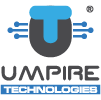Additional Accessories
UT-Co2-MARK is using imported RF CO2 Laser Generator to stabilize the output of laser power. Robust industrial design to prevent the laser light leaking and hence make it more safe for the operator. No consumables, low processing cost, the service life of the laser is very great working hours (depending upon the working operation).
Clear, high speed ,high precision and controlled engraving
High speed scanning galvanometer for optimum performance
Embedded operating system and good interface to provide best solutions for
a wide range of marking applications
ALL digital technology and mark up to 450 characters per second (stationary
marking speed)
High speed marking (MHz repetition rate) & First and last pulse equally useable


